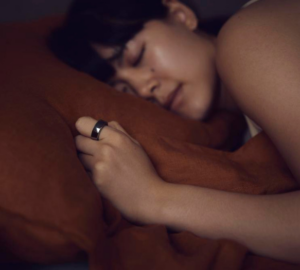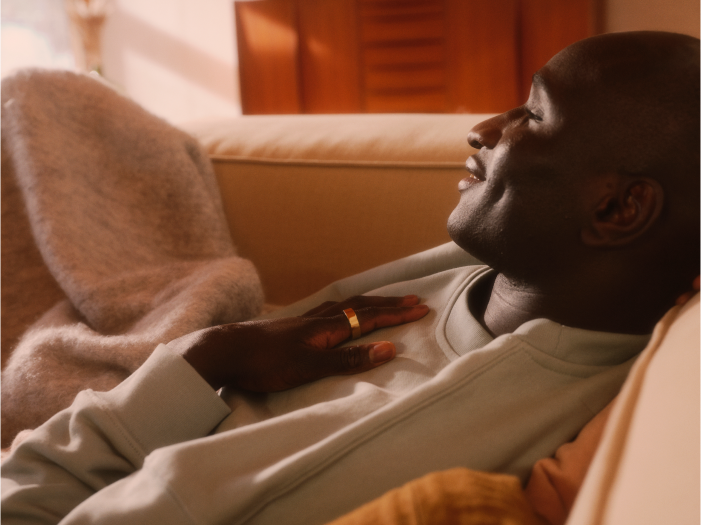- Your preferred sleeping position can offer insights into your health and may hint at your personality, though research on the latter is not peer-reviewed. It can be fun to contemplate what your sleeping positions say about you.
- Back sleeping benefits include spinal alignment and reduced pressure on the chest, but it can cause neck pain and aggravate acid reflux. Side sleeping is common and can reduce snoring and sleep apnea. Stomach sleeping is the least common and can lead to back and neck pain but may reduce snoring.
- Track your sleep with Oura to monitor your sleep quality, whatever the position you choose.
Have you ever wondered what your preferred sleeping position means for your health, or whether it is related to your personality traits?
Research into the topic of a person’s favorite sleep position and how it relates to their personality is scant and has not been peer-reviewed or replicated. However, it can be fun to contemplate the possible meaning of your favorite sleep position and whether it reflects your emotional state.
Of course, the best sleeping position is the one that allows you to get a good night’s sleep. Most people adopt certain sleeping positions — either consciously or unconsciously — not only to optimize their comfort, but also to help relieve discomfort or other symptoms. This means your most comfortable sleeping position may hold key insights about your health.
| Member Tip: Oura members can use their sleep data to learn more about their sleeping positions and figure out which is the best sleep position for optimum health. For example, by tracking blood oxygen levels throughout the night, Oura members can detect any breathing disturbances. Similarly, by tracking their movement throughout the night, Oura members can determine whether they might be disturbed by sleeping in a certain way. |
Below, learn eight common sleeping positions and the pros and cons of each for your health. We’ll also look at what each one might say about your personality — but take it with a grain of salt.
Back Sleeping Positions
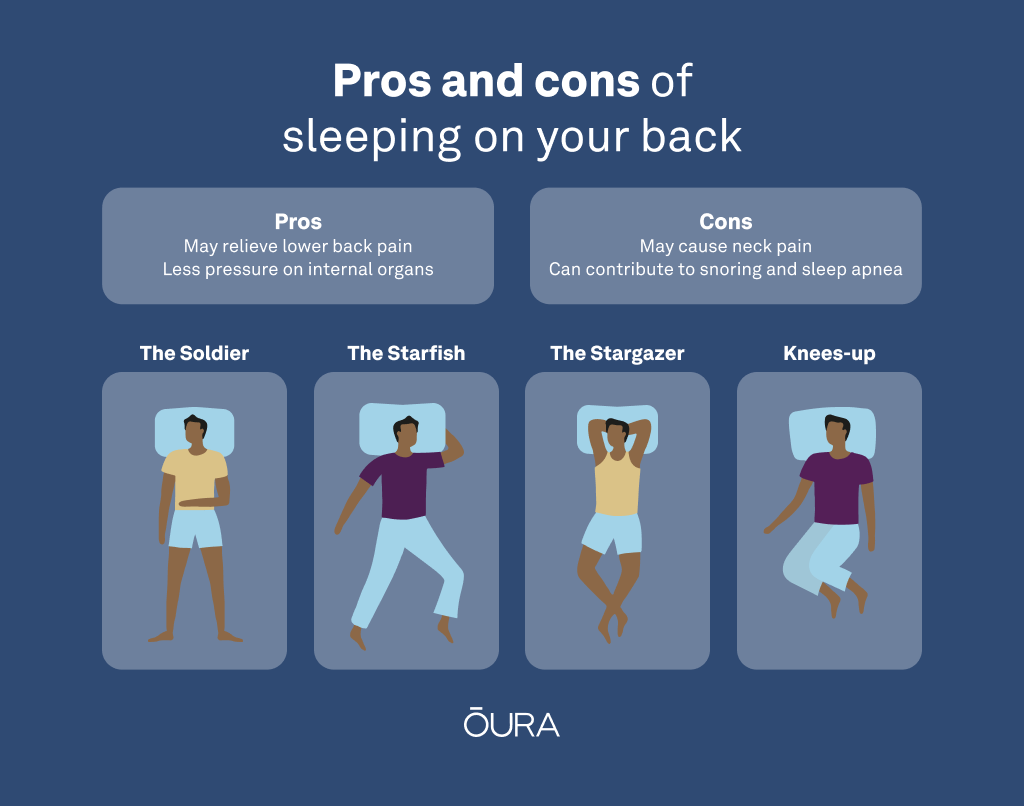
Back sleeping has a number of benefits for your health, including spinal alignment, tension headache reduction, reducing pressure on the chest and sinuses, and may even help prevent wrinkles, blemishes, and irritation on your face.
A possible drawback? According to Dr. Rachel Salas, Associate Professor of Neurology at Johns Hopkins Medicine, sleeping on your back may cause neck pain, though others may find that it relieves lower back pain.
The best thing to do is experiment with different sleeping positions to see which provides the most relief for you. For example, if you suffer from lower back pain, placing a pillow under your knees while sleeping on your back may provide relief. You can also try to use a supportive pillow that keeps the neck and head aligned with the rest of the spine.
Although back sleeping positions can aggravate acid reflux, they also reduce pressure on the internal organs and airways, allowing for better air and blood circulation. However, those who sleep on their backs are more likely to snore or suffer from obstructive sleep apnea.
In the 1970s, sleep researcher Samuel Dunkell published Sleep Positions: The Night Language of the Body. In it, he posited that back sleepers are more likely to be open and sensation-seeking than any other type of sleeper.
Later, in the early 2000s, sleep researcher Dr. Chris Idzikowski — Director of the UK’s Sleep Assessment and Advisory Service and the Edinburgh Sleep Centre — published his findings on sleeping positions and personality types. The study has not been replicated or peer-reviewed, so the results should not be taken too seriously.
Let’s take a look at Dr. Idzikowski’s analysis of some common back sleeping positions and what they might say about your personality.
1. The Soldier Position
This position involves lying as straight as a soldier stands, with straight legs and arms down along the sides of your body. Dr. Idzikowski claims soldier sleepers are quiet and reserved but also hold high standards.
2. The Starfish Position
This position consists of lying on your back with both arms stretched upwards towards the pillow. Dr. Idzikowski says starfish sleepers are more likely to be loyal, supportive friends who are willing to listen to all your problems.
3. The Stargazer Position
In this position, a sleeper lies on their back with their arms wrapped around the back of their head as though looking up at the stars. People who sleep in this position are said to have a happy, easy-going disposition, and prioritize their loved ones.
4. The Knees-Up Position
There’s no definitive explanation as to why you might sleep in this position, but the most likely is that those who sleep this way simply find it more comfortable.
The “knees-up” position may also occur in people who have an anterior pelvic tilt (APT). APT rotates the pelvis forward, forcing your spine to curve. Shortening the hamstrings by bending the knees can return the pelvis to a neutral position and alleviate pain or tension.
Side Sleeping Positions
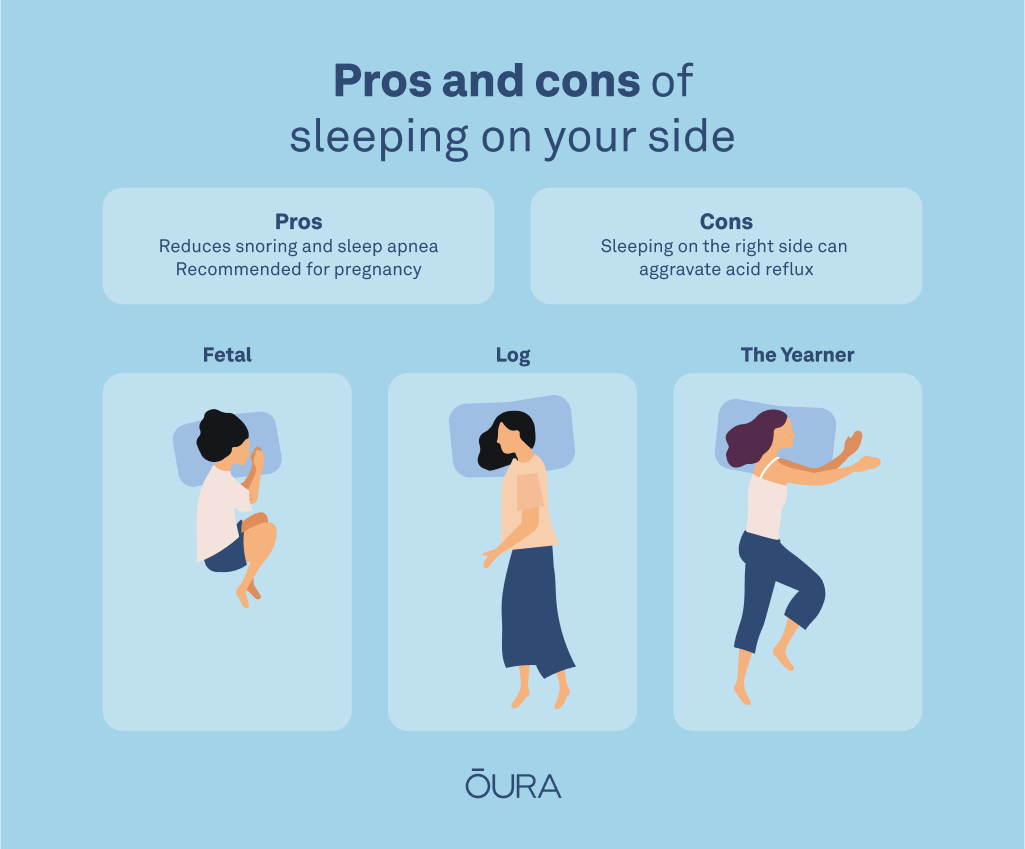
According to research, side sleeping positions are the most common and offer many health benefits. Dr. Salas points out that side sleepers may have a reduced risk of snoring and sleep apnea, but those with acid reflux should sleep on their left side, as sleeping on the right side can aggravate symptoms of gastroesophageal reflux disease (GERD).
Additionally, it’s recommended that pregnant people sleep on their side — especially during the last three months of pregnancy, as research shows that side sleeping can significantly reduce the risk of stillbirth.
Here’s what Dr. Idzikowski thinks about the meaning of three common side-sleeping positions.
5. The Fetal Position
In this position, the sleeper’s body is curled up with their knees in toward their chest and their arms bent — making them look like a baby in the womb. Sleeping in this position may mean you’re tough on the outside but shy and sensitive on the inside.
6. The Log Position
The log position involves sleeping on your side with your arms, legs, and posture more or less straight. Dr. Idzikowski says people who sleep in this position tend to be social butterflies, friendly, carefree, and popular — but potentially gullible.
7. The Yearner Position
A sleeper in the yearner position appears to be reaching for something. Their legs and arms are both outstretched like in the log position, but the difference is that their arms are extended forward rather than by their sides. People who sleep like this may be open-minded, yet can be cynical of people and situations.
RELATED: How to Choose the Best Bedding for a Better Night’s Sleep
Stomach Sleeping Positions
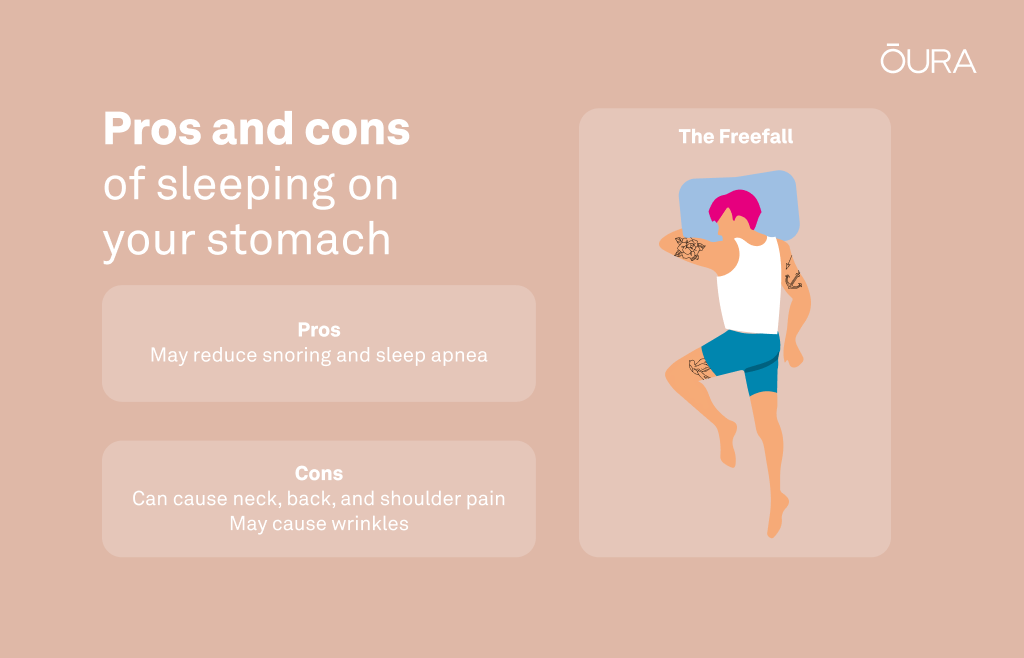
Stomach sleeping positions are the least common, with people spending less than 10% of their time asleep on their stomachs. Research suggests that stomach sleepers are more likely to experience back, neck, or shoulder pain due to the spinal misalignment that this position causes. However, other studies have shown that it may reduce snoring and sleep apnea.
If you’re concerned about maintaining a youthful appearance, you might want to avoid sleeping on your stomach (and side) since research indicates that, over time, these positions can cause facial distortions and wrinkles.
The most common stomach sleeping position is the freefall position. In this position, a person sleeps on their stomach with their hands on, around, or under their pillow and their head turned to one side.
Here’s what Dr. Idzikowski says about people who sleep in this position.
8. The Freefall Position
Freefall sleepers tend to behave brashly but are, in fact, fairly thin-skinned, sensitive to criticism, and tend to shy away from extreme situations.
What Your Sleeping Position Says About You and Your Health
Choosing the best sleeping position for your health is crucial to getting a good night’s sleep — and quality sleep not only underpins good health but also sets you up for success in all areas of your life.
Oura members report improved sleep quality after using Oura Ring, which helps them perform better for themselves, their families, and their work.
While the jury may still be out on “sleeping position meaning,” does it actually reflect your personality? Can it be an indicator of underlying health issues? Perhaps. Probably not.
| Member Tip: Using Oura to track Deep Sleep, Light Sleep, and REM Sleep can help you identify any sleep issues and allow you to investigate any possible causes — including whether your sleep position is an issue. |
RELATED: 5 Ways to Upgrade Your Sleep Hygiene







